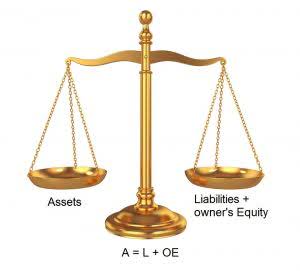
In this article, we’ll cover how to read a nonprofit statement of activities. For nonprofit organizations, transparency and accountability are not just regulatory requirements but are vital for gaining and maintaining the trust of donors, members, and stakeholders. A clear understanding of a nonprofit’s financial health is crucial for these entities to effectively manage resources, plan for the future, and communicate their financial status to interested parties. The Statement of Activities is a fundamental tool in this process, serving as a comprehensive report that provides a snapshot of the organization’s financial activities over a specific period. A statement of activities is a comprehensive report that provides valuable information about an organization’s finances. It typically includes data on revenues, expenses, and changes in net assets.
- The first category to appear on this financial report is revenues, or how much money the organization is collecting.
- And be the trusted financial partner you can turn to for answers to your questions and expert financial advice.
- If you’re starting a new nonprofit, a statement of activities is one of the 4 financial reports you must file.
- Improved management of resources can help your nonprofit organization to achieve its goals more efficiently and effectively.
- The other thing that FASB 117 requires of nonprofit entities is reporting of expenses by functional classification.
- A nonprofit statement of activities example will have a heading, body, and bottom line.
- Additionally, nonprofits must also consider the concept of donor restrictions.
Explanation of Restricted vs. Unrestricted Funds
It is a financial snapshot that can be used to track the organization’s financial progress. Yes, you can add non-cash items like donated goods or services to the Statement of Activities. If they matter to your nonprofit’s finances, record them at their real value. This section details the fundraising, donations, grants, program service fees, membership dues, and investment income.

Are You Ready To Outsource Your Accounting?
- For instance, if your nonprofit has $55,000 in expenses and $65,000 in total revenue, it would appear that your net assets are positive, at $10,000.
- The Statement of Activities in nonprofit accounting is akin to an income statement used in for-profit businesses, but with some key distinctions that reflect the unique goals and structure of nonprofits.
- Income sources can consist of things like grants, donations, and investment income.
- This figure indicates whether the organization has gained or lost resources during that time, directly impacting its overall financial position.
- Consequently, the increase in net assets of $22,500 is derived after deducting both revenues and expenses.
Once the total expenses are subtracted from the total collected revenue, the result is a change in Net Assets. Since nonprofits operate with the intention of using all profit to fuel their mission, the change in net assets is typically much smaller when compared with a for-profit entity. After that time elapses, they can be released from restriction and used as the nonprofit sees fit. Meanwhile, unrestricted revenue can be allocated toward projects, operations, and other expenses as chosen by the nonprofit itself. Your organization works hard to raise funds and to use those funds to further your mission. Ensuring your reports are in Partnership Accounting check will help your nonprofit make the most of your finances moving forward.
What Is A Statement of Activities for Nonprofits?

Expenses represent the costs incurred by your nonprofit in carrying out its activities and operations. If you use accounting software, you’ll need to input all of the information manually. This can be time-consuming, but it’s not as expensive as hiring an accountant. There are two levels to the statement of activities; the summary level and the program level. Next, you add together all expense items, such as salaries, facility costs, supplies, and other operational costs, to get the total expenses line.

The way expenses are categorized and reported in the Statement of Activities is not merely a matter of financial recording but a reflection of the nonprofit’s operational priorities and efficiency. This section of the Statement of Activities plays a crucial role in how the organization is perceived by external statement of activity parties and how it manages its internal operations to maximize impact on its mission. Nonprofits may receive donations that donors, corporations, or foundations wish to use on specific programs or expenses. Nonprofits must follow all donor requests, and these donations must be listed under restricted funds on a Statement of Activities. A Statement of Activities will help nonprofits file Form 990 with the IRS and provide needed transparency to donors, foundations, and corporations.
Encouragement to Utilize This Knowledge to Make Informed Decisions About Involvement or Investment in a Nonprofit
- Temporarily restricted net assets, on the other hand, come with donor-imposed restrictions that limit their use to specific purposes or time periods.
- For nonprofit organizations, transparency and accountability are not just regulatory requirements but are vital for gaining and maintaining the trust of donors, members, and stakeholders.
- While no information was obtained for impacted customers that would compromise the safety of customer accounts or finances, we want to be transparent with our customers and ensure they are aware.
- Initially founded in October 1941, the organization describes itself as a clear voice for freedom and democracy worldwide.
- Within both levels, information is given indicating the income and expenses of the nonprofit.
- A Statement of Activities includes revenue and expenses during a nonprofit’s reporting period (a fiscal or calendar year) and gives an overview of the changes to an organization’s net assets during that time.
The Statement of Activities is the Income Statement of a nonprofit organization. Fees from rendering services, donor restricted contributions, gains & losses on investments, member dues, program fees and fundraising events. Revenues should be reported on a gross basis, but investments Certified Public Accountant can be reported on a net basis.


